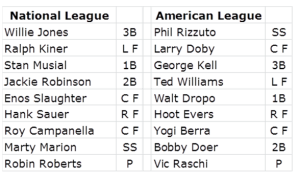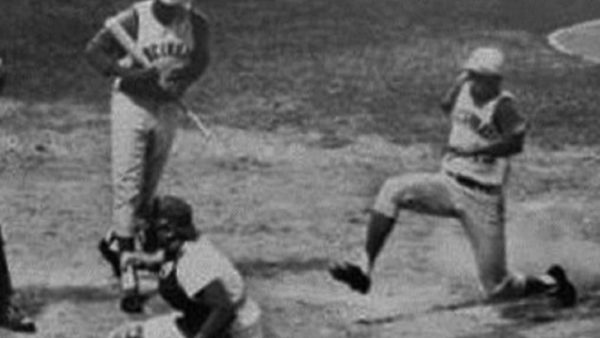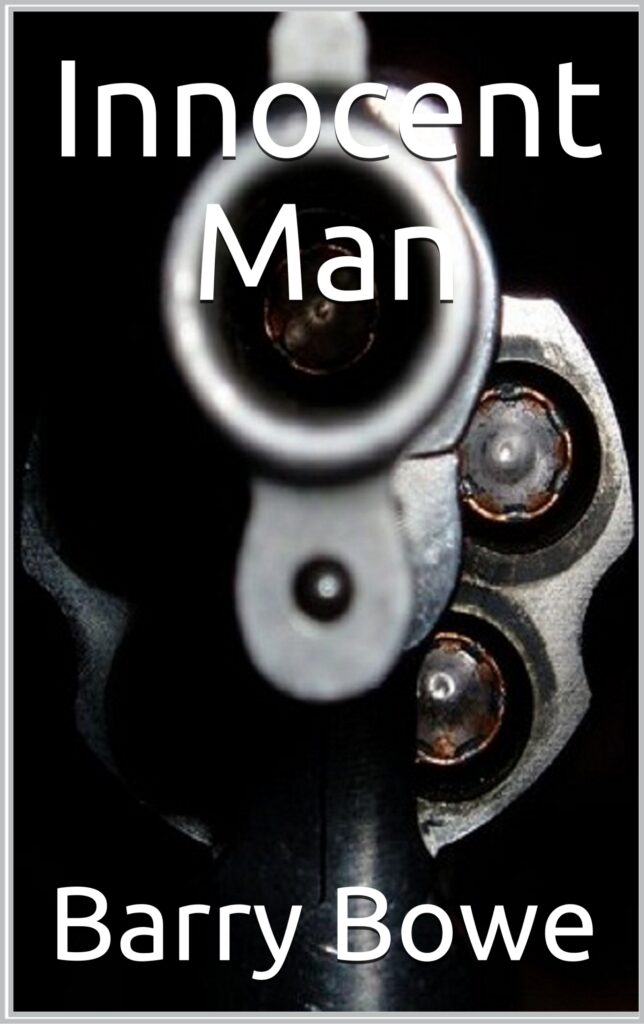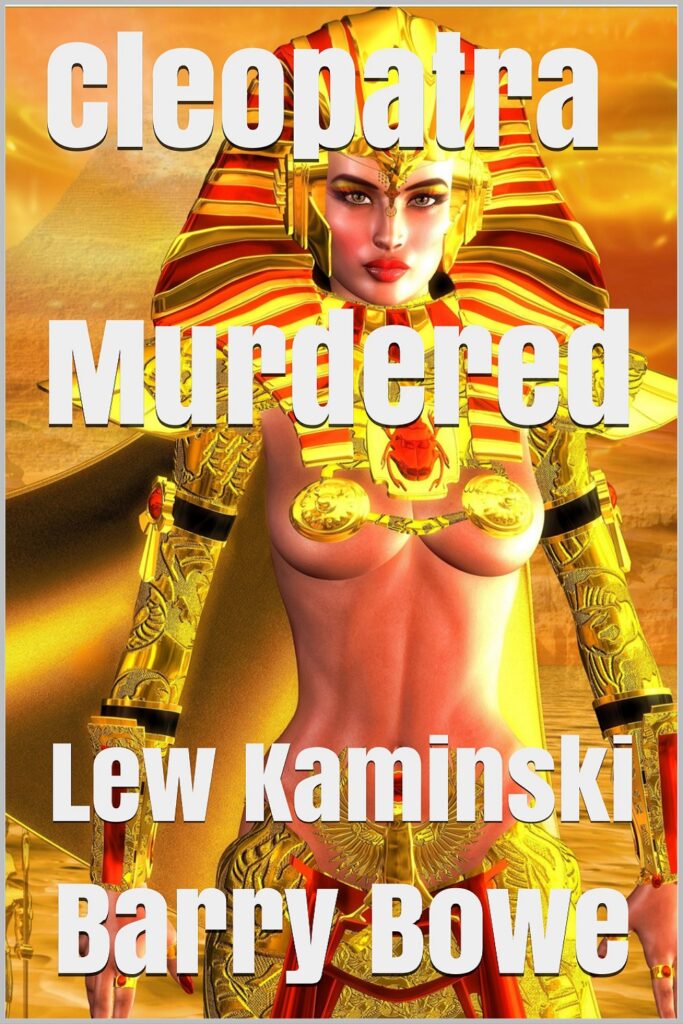First All-Star Game
The first All-Star Game was played at Comiskey Park in Chicago on July 6, 1933. The game was the brainchild of Arch Ward, the sports editor of the Chicago Tribune, who thought it would be a perfect vehicle to promote the “Century of Progress Exposition” being hosted by the City of Chicago.
There was no extravaganza surrounding the game back then. No Home Run Derby. No Celebrity Softball Game. Just the best players in the National League playing against the best players in the American League and – get this – trying to win the game.
That’s in sharp contrast to the contemporary exhibitions disguising themselves as All-Star Games played today in which the ballplayers – pardon my French – don’t give a shit about who wins or who loses. To today’s over-paid millionaires, the all-star game is an all-expenses-paid party for the single ones and a family vacation for the married ones. Plus many players have a bonus addendum in their contract tied into making the All-Star team, so it’s just an extra paycheck.
But there was a time when winning or losing the All-Star Game was of paramount importance and the “fun and games” were insignificant. That’s because the All-Stars of yesteryear possessed more pride and a greater desire to win then our current crop of players.
By the way, the American League won that first All-Star Game 4-2.
Sometimes referred to as the “Midsummer Classic,” the All-Star Game has been played ever since. In fact, from 1959 thru 1962, there were two All-Star Games played each year.
1950 All-Star Game
On July 7, 1950, the All-Star Game was back at Comiskey Park. This was the 17th Midsummer Classic. The American League held a 12-to-4 edge over the National League thus far and this game was a perfect example of the pride of performance and desire to win that I’m talking about.
With one out in the first inning, the Yankees Vic Raschi threw a fastball to the Pirates Ralph Kiner – and Kiner crushed a long line-drive to left. Ted Williams was playing leftfield for the American Leaguers.
Now, Ted Williams was never known for his glove. In fact, backup Gene Stephens was often used as a defensive replacement for Williams in the late innings of Red Sox games. Stephens was used in that capacity so often that he came to be known as “Ted Williams’ Caddy.”
But that day, prompted by a desire to win the All-Star Game at all costs, Ted Williams turned into a glove-man. This is how he later described the play:
‘‘It was a fly ball to left-center. Kiner hit it and his ball always kept carrying and carrying. I was running and running, and I was going to get it, but I didn’t realize how close I was to the fence. I got the ball and turned around and there’s the fence right there. I tried to hold myself off, but I broke my left elbow. I didn’t hit the wall that hard, but my arm was extended to break the impact when I hit it, and I just crushed my left elbow.”
Williams ignored the injury – a broken elbow for crying out loud – and remained in the game. Today, he’d probably be surrounded by the training staff and carted off the field – but not in 1950.
In the fifth inning and still in the lineup, Ted Williams lined a two-out single to right to score the Indians Larry Doby with the go-ahead run that put the American League on top 3-2 – for the time being.
In fact, Williams remained in the game for three more innings. After looking at a third strike in the eighth inning because he unable to swing, he left the game.
Extra Innings
In the top of the ninth, Ralph Kiner hit a home run off the Tigers Art Houtteman to tie the score 3-3. When the American League failed to score in the bottom of the ninth, the All-Star Game went into extra innings for the first time.
The score remained 3-3 thru 13 innings.
In the top of the 14th, the Cardinals Red Schoendienst – who’d replaced Jackie Robinson at second base in the bottom of the 11th, hit a home run to left to take the lead at 4-3.
Ewell “The Whip” Blackwell from the Reds retired the American Leaguers in the bottom of the 14th to seal the victory.
Philly Notes
Four Whiz Kids played for the National League:
- Robin Roberts started the game and pitched the first three innings. He gave up one run on three hits, struck out one and walked one.
- Willie “Puddin Head” Jones – leading off and playing third base – went 1-for-7 with a single and recorded two put-outs and three assists without an error.
- Dick Sisler singled as a pinch-hitter for the Dodgers Don Newcombe in the top of the sixth – and was replaced by pinch-runner Pee Wee Reese.
- Jim Konstanty pitched a 1-2-3 sixth inning – fanning two.
First-baseman Ferris Fain was the lone player selected to represent Connie Mack’s seventh-place 27-49 Philadelphia A’s.
Fain – who was batting just .263 at the All-Star break – would go on to win the American League batting title the next two seasons hitting .344 and .327. Those two seasons – 1951 and 1952 – were the A’s last two years in Philadelphia before moving to Kansas City for the 1953 season.
Williams Shelved
Two days after the 1950 All-Star Game, surgeons spent two hours operating on Ted Williams and gave him little hope for a full recovery. He was placed on the Disabled List and didn’t play for the rest of the 1950 season.
After the cast was removed, he experienced considerable pain and was unable to fully extend the arm. The situation made him consider retirement – rather than embarrass himself because he could no longer hit like the Ted Williams that baseball fans had come to know.
But his arm did heal. He didn’t retire, played for another ten years, and batted .336 over those ten years ─ just .008 below his .344 lifetime average.
I can’t imagine many of today’s ballplayers risking their bodies by crashing into a wall to make a catch during an All-Star Game. By the way, the walls back then were constructed out of concrete.
[The header photo shows Ted Williams and Ralph Kiner – who were the starting left-fielders.]
Barry Bowe is the author of:










Comments
No Comments